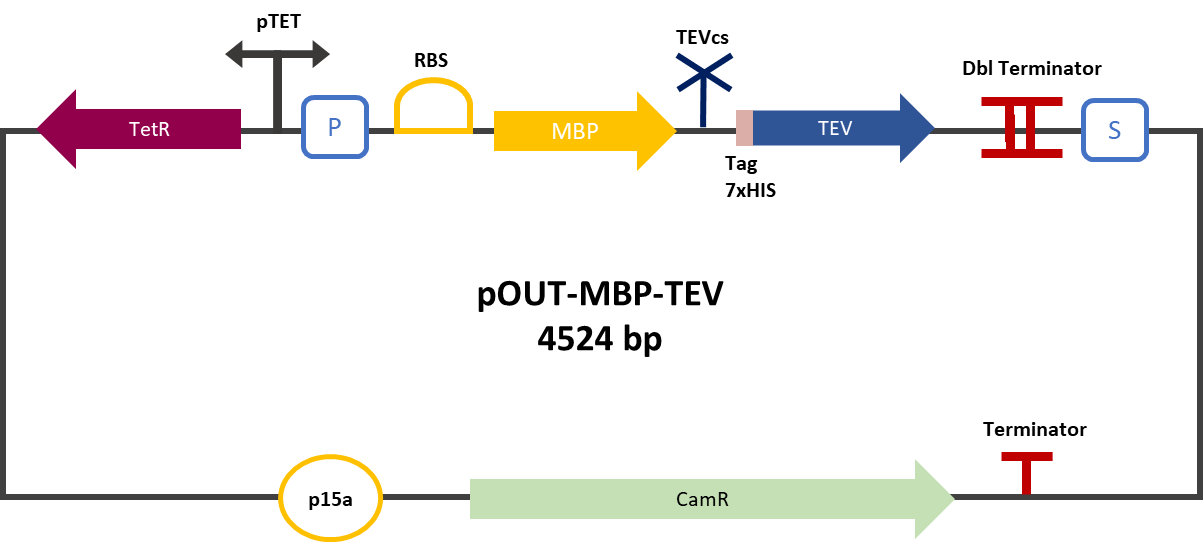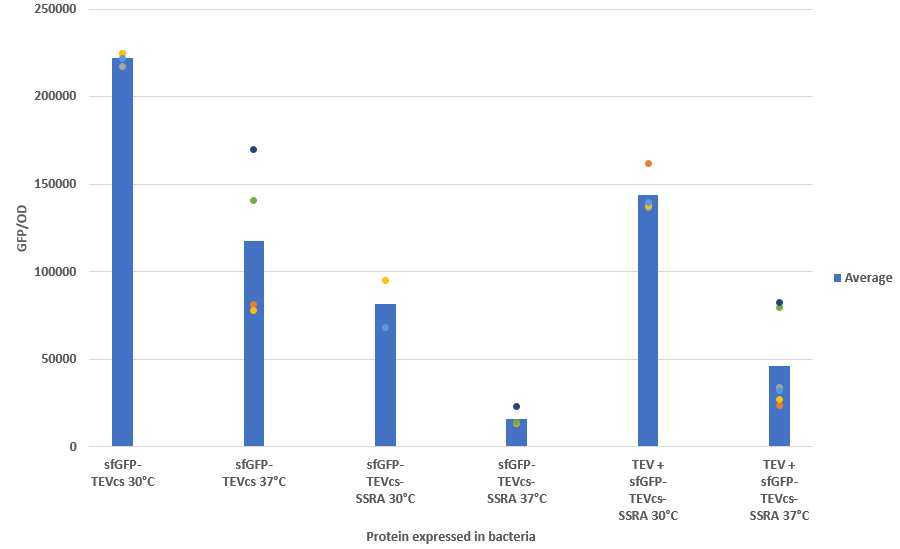Part:BBa_K3147005
I. Part BBa_K3147005 (MBP-TEVcs-TEV) function
The 2019 Montpellier iGEM team made this construction in order to compare the basal activity of the TEV protease (BBa_ K1319004) with the same protease fused to a VHH nanobody (BBa_K3147009). This construction was used as a control within the framework of the KARMA project. This construction produces a maltose-binding protein (MBP) fused to a TEV protease separated by a TEV cutting site (BBa_ J18918). MBP increases the solubility of the fusion protein [1], preventing the aggregation of the protein of interest. This stabilizes the expression and the sequence of the produced MBP does not have a signal peptide, which allows the protein to remain in the cytosol. The TEV cutting site allows self-cleavage of MBP from TEV once the protein is produced [2]. A 7His affinity tag was added to N-terminus of the TEV protease to facilitate validation of protein production and MBP cleavage via Western blot and protein purification if desired.
II. Proof of function
The experimental approach to test protease activity is to compare the fluorescence production of an ssrA-tagged sfGFP between MBP-TEV and MBP-TEV fused to a VHH. The construction was cloned by Gibson Assembly in a backbone pOUT18 under the control of a Tet-on promoter. The TEV cleavage site used is the classic ENLYFQS site, and MBP stabilizes the expression and increases the solubility of the fusion protein. The TEV protease used is optimized for expression in E. coli. The sequence contains an cleavage mutation "S219V anti-self-cleavage".
In order to carry out this experiment we used NEB10B E. coli. Fluorescence data are obtained by a plate reader at 30°C and 37°C. The protease is expressed by inducing the Tet promoter with 50 ng/mL of aTc (anhydrotetracycline). In this experiment, basal controls of maximum and minimum fluorescence of reporter genes were used.
Reference
[1] Raran-Kurussi, Sreejith, et David S. Waugh. 2012. « The Ability to Enhance the Solubility of Its Fusion Partners Is an Intrinsic Property of Maltose-Binding Protein but Their Folding Is Either Spontaneous or Chaperone-Mediated » éd. Bostjan Kobe. PLoS ONE 7(11): e49589.
[2] Shih, Y.-P. 2005. « Self-Cleavage of Fusion Protein in Vivo Using TEV Protease to Yield Native Protein ». Protein Science 14(4): 936‑41.
Sequence and Features
- 10COMPATIBLE WITH RFC[10]
- 12COMPATIBLE WITH RFC[12]
- 21INCOMPATIBLE WITH RFC[21]Illegal BglII site found at 379
- 23COMPATIBLE WITH RFC[23]
- 25COMPATIBLE WITH RFC[25]
- 1000COMPATIBLE WITH RFC[1000]
| None |



